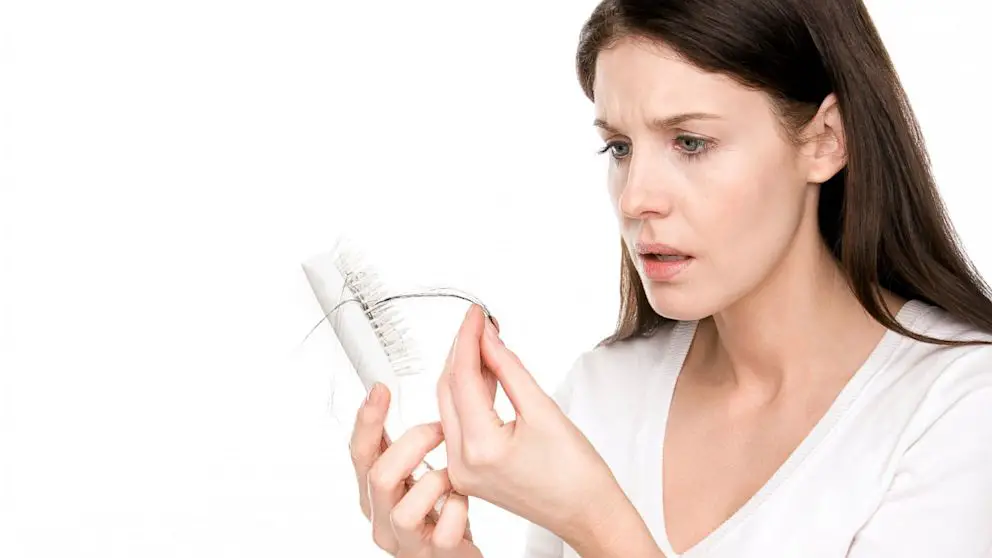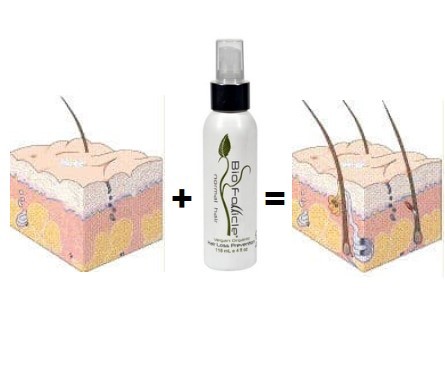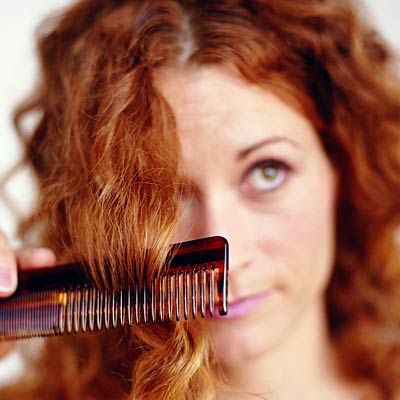One of the most frequently asked questions is, can hair grow back after thinning? This is a terrible thought because when we look in the mirror and see that our hair has become thinner than usual – all we want to know is how long it will take for our hair to regrow from being ‘thin.’
But what many males and females with thinner hair need to realize is that there are things you can do to speed up the process of regrowth and give your locks the boost they need to get back on track.
As we age, our hair is not exempt from change. Many people experience loss of volume and thickness, while some deal with thinner hair. A common cause for thinning hair on the top of your head may be related to diet or nutrient deficiencies, but sometimes there’s nothing you can do about it; genes also play a role in this type of condition. However, there is an easy solution for making your less-thick hair seem thicker than before for many other cases!
Causes of thinning hair are plentiful and vary for each person. Although it slows down or reverses the process, it is essential to identify what could be causing your concern concerning thinning hair. Treatment options are also varied, but there are multiple things you can do at home before turning to medications or other methods if they don’t work out.
Causes of Thinning Hair
There are many factors related to thinning hair. Hormonal changes, medications, hereditary patterns, scalp infections, and medical conditions can all contribute to the problem of too little hair growth.
The average number of hairs lost daily is fifty to one hundred. The human body regenerates new hair as old ones fall out and break off at the root; however, bald patches or extreme loss in a particular area may indicate other conditions (e.g., alopecia areata).
- Androgenetic Alopecia– commonly known as male and female pattern baldness, is a form of hair loss typically occurring in adults. It affects approximately 50 million males and 30 million females living in America alone. Males with this condition will experience thinning at the hairline, which progresses to the top of their head, while Females may notice a receding hairline but most prominently on their crowns/the top part of their heads.
- Alopecia areata– is a condition that causes bald patches on the scalp. It can also affect the eyebrows, beard, and other areas where hair is present. Thankfully, even though these follicles have been destroyed, they will eventually grow back when injected with medication once every 4-6 weeks for 6 months or longer.
- Telogen effluvium– is when long generations of significant stress cause thinning hair. When the person falls out of this stressful state, the hair will generally return to its original thickness. Still, it may be difficult for it all to grow back if there was already a lot of stress-related damage done in that area before the period ended.
- Hair loss– is often caused by malnutrition and vitamin deficiencies. Vitamin D stimulates the hair follicles, which leads to hair growth. Therefore if a person has not been getting sufficient amounts of vitamin D, they may experience some level of hair loss.
Whatever the cause, getting to the root of the problem is crucial. Please speak with your physician or hair doctor and find out what it is, then correct it accordingly.
Can hair grow back after thinning?
The short answer is that it all depends on a variety of factors. But First, hair thinning will grow back if you stop worrying about it, reduce stress, and use the treatment below to stop thinning hair and promote hair regrowth naturally.
Treatments
There are some basic and simple steps that you can take to battle thinning hair. An excellent first step would be to switch from using harmful hair care products, for instance, those containing harsh chemicals or toxic dyes, which may lead to increased scalp inflammation resulting in accelerated hair loss. Products with DHT- blocking properties can also be helpful for those struggling with male pattern baldness because these types of shampoos and conditioners may include components designed to disrupt the production of DHT, a hormone correlated with this type of alopecia.
Ensure you avoid certain hairstyles, such as a tight ponytail that can result in hair loss. Other styles, such as ones done with rubber or elastic bands, may lead to breakage and thinning of the hair.
Prescription medication for hair loss is now available to those who need it. Two of the most common prescriptions are Provillus and Propecia, which can be administered topically or orally. These medications are approved by the FDA and clinically proven to treat male pattern baldness and even reverse hair loss; clinical trials have shown them effective treatments when combined with PRP therapy or red laser light hair therapy.
Plasma rich in platelets containing active growth factors can stimulate inactive follicles when injected back into your scalp via PRP therapy. This treatment can also work alongside other treatments such as (Propecia®) Finasteride and Minoxidil (Rogaine®), or both therapies simultaneously!
If all else fails, consider a hair transplant. With advances in medication such as Minoxidil and Finasteride- it has become easier for patients to get natural-looking results. In addition, hair transplants can help fill gaps in thinning areas by moving thicker hairs from the side or back of the scalp over and onto these spots – but first, you’ll need to consult with a specialist on what treatments are best for you.
Early intervention is essential when it comes to thinning one’s hair, as the longer you wait before taking action, the more difficult it becomes to counteract this problem. For those men who start noticing a loss in their hairline at only the vertex of their scalp but are not entirely balding at the crown yet, they have an opportunity to prevent further losses and even grow back some or all of their lost hair.
It is important not to become discouraged too quickly during treatment. Keeping up with it for at least three to six months will give you the best results. Hair takes a while to grow back, so it may take some time before you notice change happening.
Finally
Overall health and nutrition can also influence hair growth. Ensure that your diet includes sufficient levels of iron, vitamins C and B, and essential fatty acids. Zinc and silica can also help reverse thinning hair loss.
I hope this article answers your question, can hair grow back after thinning?
If you’re experiencing thinning hair or hair loss – watch this video. It’ll show you what’s causing it and how to fix it if it is temporary!
- AI Powered Bald Filter Online 2024: See Yourself with No Hair! - January 19, 2024
- Harklinikken Bad Reviews 2024: Analyzing Negative Feedbacks - January 18, 2024
- How to Get the Alex Eubank Hair | Step-By-Step Tutorial 2024 - January 18, 2024







